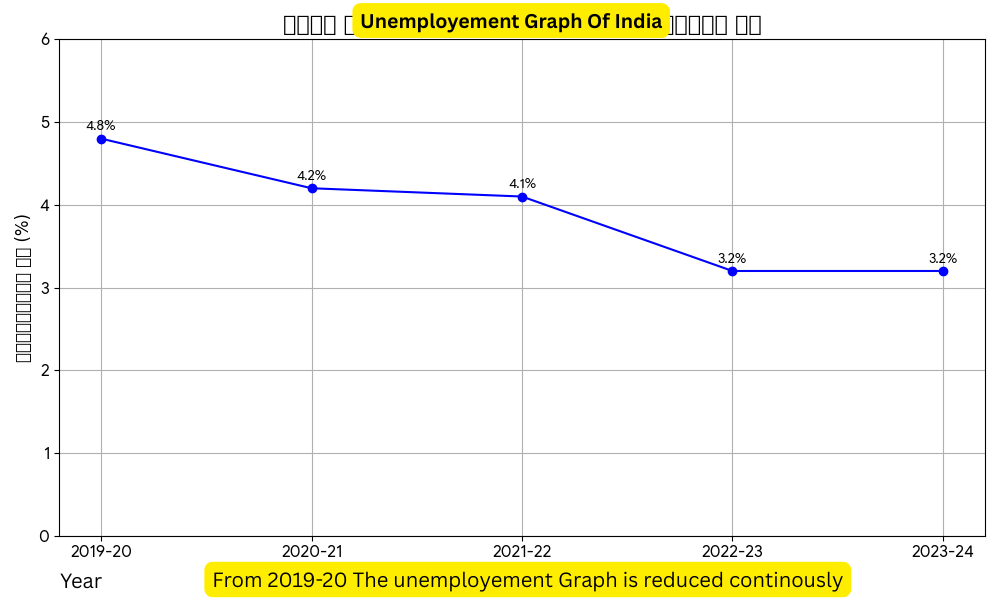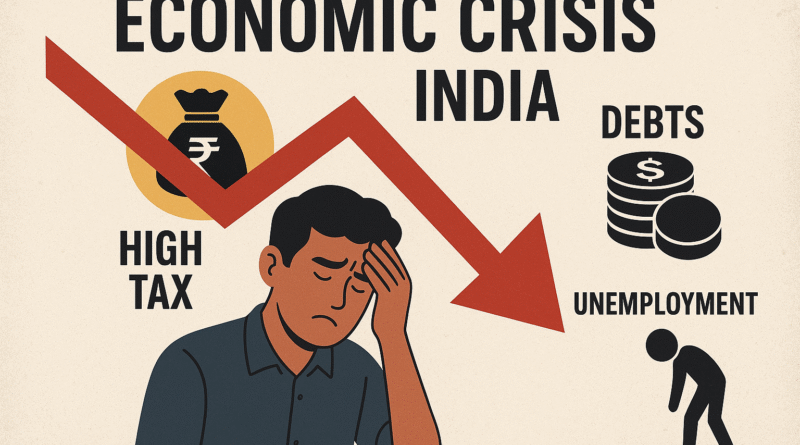Analyzing India’s Employment Landscape: A Look at Recent Initiatives and Current Challenges
Analyzing India’s Employment Landscape: A Look at Recent Initiatives and Current Challenges : Prime Minister Narendra Modi’s recent Independence Day speech introduced several new initiatives, including the “Pradhan Mantri Viksit Bharat Rojgar Yojana,” which aims to generate 3.5 crore jobs over the next two years. This ambitious goal is a key part of the government’s efforts to address the country’s employment challenges.
However, the reality on the ground highlights some significant hurdles. Data over the last five years indicates a consistent decline in employment figures, a trend exacerbated by the COVID-19 pandemic. While many other countries, such as China, Japan, and the United States, have shown signs of recovery, India’s unemployment rate continues to be a major concern.

This trend is visible in the daily lives of many. Friends and colleagues in the IT sector, for example, are increasingly finding themselves on “the bench” without projects, fearing layoffs. Major companies like TCS, once seen as a symbol of job security, have recently announced plans to reduce their workforce by 2%, signaling a broader issue within the industry. Similar challenges are affecting employees across many other sectors.
In response to the limited traditional job opportunities, many young people are turning to self-employment, particularly as content creators on platforms like YouTube and Instagram. While this path offers an alternative, the struggle to monetize their content and find financial stability highlights the underlying issue of widespread joblessness.
The new “Pradhan Mantri Viksit Bharat Rojgar Yojana” has several key components designed to address these challenges:
Part A: Assistance for First-Time Employees
- Incentive: Eligible first-time employees registered with EPFO can receive a one-time incentive of up to ₹15,000.
- Payment Structure: The amount will be disbursed in two installments: the first after six months of continuous service with the same employer, and the second after 12 months, provided the employee completes a financial literacy program.
- Eligibility: Employees must have a monthly salary of up to ₹1 lakh. The incentive will be provided via Direct Benefit Transfer (DBT) to their Aadhaar-linked bank account.
Part B: Incentives for Employers
- Incentive: Employers who create new positions and hire additional employees will receive an incentive of up to ₹3,000 per month for each new hire.
- Duration: This incentive is available for up to two years, with an extension to four years for companies in the manufacturing sector to support the “Make in India” initiative.
- Eligibility: Companies with fewer than 50 employees must hire at least two additional employees, while those with 50 or more employees must hire at least five, and they must be retained for at least six continuous months.
The success of these programs will be crucial for the nation’s future. The hope is that these initiatives will help to generate the promised jobs and make a significant impact on India’s employment challenges.

